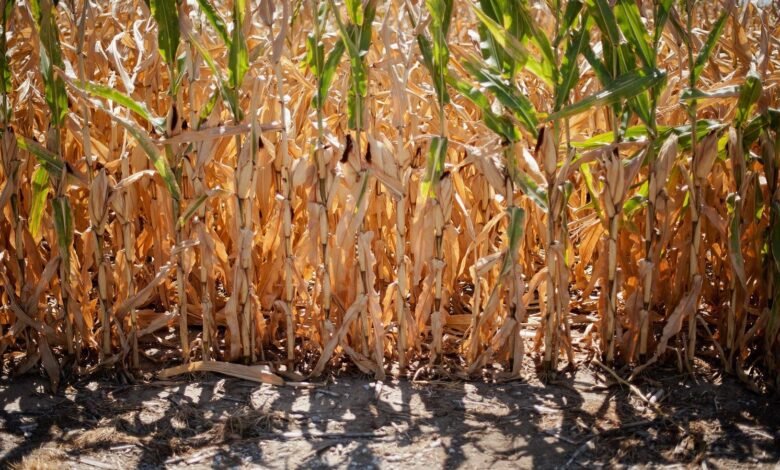An Abbreviated History Of Water

In an 1878 report to Congress and subsequent writings, explorer and scientist John Wesley Powell called for a science-based approach to effective management of agricultural land and freshwater resources in the center of the United States. Powell, who became the second director of the U.S. Geological Survey in 1881, identified the 100th meridian as a line of demarcation between the humid eastern side of the country and the arid west.
The 100th meridian is a line of longitude situated just about 100 degrees west of the prime meridian in Greenwich, England. It cuts through six states from North Dakota to Texas, and as Powell observed, divides regions of higher and lower precipitation and the influence of elevation, wind patterns and other factors. Although invisible, its presence is apparent on maps that illustrate human settlement patterns, the size of farms, and the kinds of crops grown in different places. For example, thirstier corn is more dominant to the east of the line, and wheat to the west. Powell predicted that irrigation would be needed to green the Western U.S. and make it habitable in terms of food security.
Powell’s guidance was not substantively integrated into policy decisions, and we are reaping the consequences 150 years later. Boundaries were drawn, water rights were negotiated and land use practices have been driven by many forces, but rarely science. How lands and waters are managed is, broadly speaking, inadequately coordinated. Population growth, economic systems and the presence of infrastructure and development mean the path to sustainability is exponentially more complicated today than in Powell’s time, and climate change is a compounding factor.
I recently spoke with Richard Seager, a climate scientist with Columbia University. His research indicates that global warming is pushing the dividing line between arid and humid regions to the east of the 100th meridian. That shift is leading to increased volatility in everything that has to do with water in America’s heartland, including the productive and globally significant Mississippi River basin.
Here where I live and work in New Orleans to the east of the 100th meridian, summer is upon us. Heading north up the Mississippi River, crops that are essential to the global food supply are in the ground. Some crops on the east side of the 100th meridian have historically required little or no irrigation. Yet as aridification heads east, that is changing. In the period spanning 2002-2017, more than one million acres of farmland became irrigated land in the five riparian states of the upper Mississippi River basin, an increase of 43%. Most of this water came from groundwater, and a recent analysis suggests that this groundwater is declining under the Corn Belt. This trend is forecasted to increase. If fields are consistently irrigated more to adjust to the shift in aridity, more groundwater will be used. This will compromise the availability of adequate water in rivers to ship crops to ports. Volatility in these steps leads to a higher price tag on the products that end up on grocery store shelves around the world.
Yet Seager and I agree that there are solutions available. We have the technology, tested management techniques and the time–to a point–to adapt, in the Mississippi River basin and beyond. One such (nature-based) technology is on-farm recharge, which means capturing rainwater and directing it underground for future use. In California, for example, state agencies in collaboration with the Army Corps of Engineers are designing managed aquifer-recharge programs in the Central Valley that take floodwater and use it to recharge thirsty aquifers. As desertification moves east, those same kinds of solutions can–and should–be applied in the center of the country as well.
When the path forward is murky, looking back at the observations and ideas of the past is almost always a good place to begin. That’s why Powell’s work is still studied. And if we heed his message and combine it with new technology, the solutions of leaders like Seager and a sense of urgency, we can adapt.
Source link




